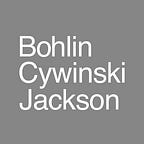Architect Liam Smith Earns Passive House Certification
With the Intergovernmental Panel on Climate Change’s increasingly alarming annual reports and a proliferation of tools, methodologies, and certification processes to support sustainable design, Passive House has emerged as one of the most rigorous certification programs in our industry. Bohlin Cywinski Jackson Architect Liam Smith recently became Passive House certified, and sat down with us to share a bit about the process and what he learned along the way.
What drew you to the Passive House program?
I was drawn to the program by a sense of responsibility as practitioner to move my personal design practice in this direction. It’s also a good opportunity for Bohlin Cywinski Jackson to do something that evolves our sustainability practice in new ways. We have clients interested in how this program might make their projects more efficient and high-performing, while reducing carbon emissions and incorporating renewable energy systems.
How do you feel the Passive House framework differs from others?
Current Passive House standards were developed through sponsorship by the Department of Energy (DOE), and incorporate the Environmental Protection Agency (EPA) indoor airPLUS qualification and ENERGY STAR standards, amongst others. It ties many facets together into a single certification framework, yet remains flexible enough to be applicable across climate zones, building sizes and densities. Beyond energy standards, they have developed detailing recommendations to ensure near airtight building envelopes, which have real-world tech impacts but also product ramifications. Everything is certified and tested to a certain level within this framework — from the materials to installation, to verify the building performs to the standards it was designed.
There are many shared goals between Passive House and other certification frameworks like LEED, but Passive House is fairly ambitious in scope and specificity. Throughout the United States, our buildings typically use 6x more energy than the global average. Passive House achieves its energy efficiency targets through a combination of climate zone specific insulation requirements, and a highly controlled building envelope making all processes within buildings more efficient. There are checkpoints for all building systems as well, and a net zero certification, which goes beyond the standard Passive House requirements.
What was the process like to get certified?
There are two phases to the certification process. Phase I was fairly self-directed with tutorials and videos covering all aspects of the building certification process including building science, systems integration and assembly detailing. Phase 2 was “in-person” seminar in which I spent about 3–4 hours a day doing online coursework for around 2 weeks. During that period, I often worked in groups doing design exercises that covered everything from envelope design to mechanical systems design. Building modeling plays a huge role in the certification process, so that was part of the coursework. In addition to the final exam, I had a month to do my own design project and was given a prompt to make a duplex in Portland.
Now that I’m certified, I hope I can share some of what I learned with clients and colleagues here at BCJ.
